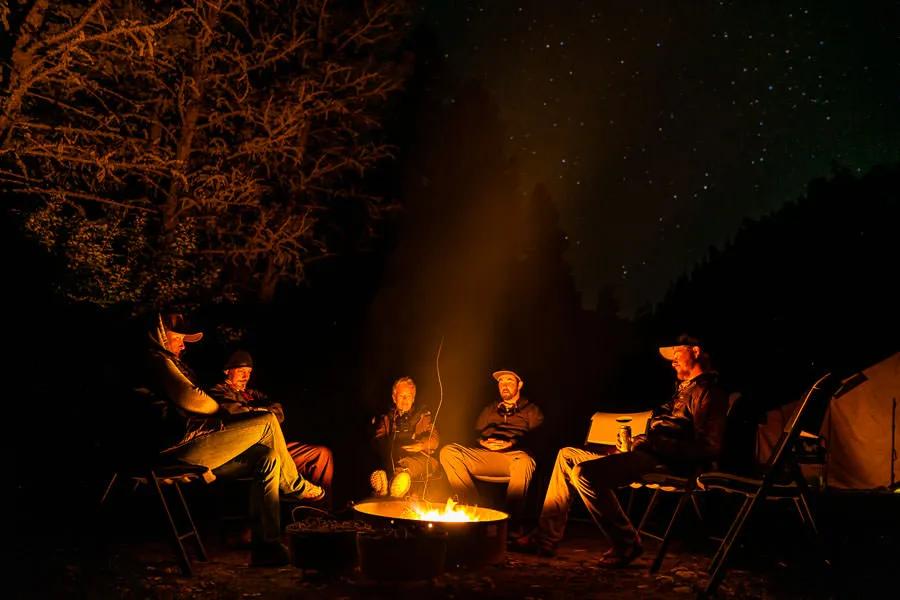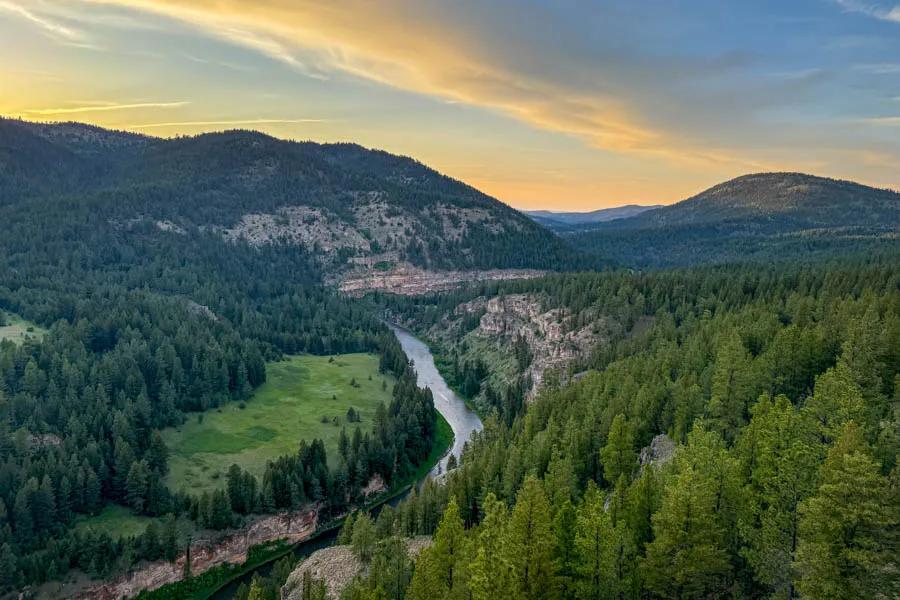
The Smith River flows through a remote 60-mile canyon and is home to several thousand trout per mile. Unlike the tailwaters of the Missouri or Madison Rivers or the crystal clear Paradise Valley Spring Creeks, Montana's Smith River is a free flowing freestone river with streamflows and water temperatures affected by winter snowpack and summer irrigation demands. Because of the Smith River's unique nature, knowing when is the best month to fish the Smith River is crucial to a successful trip. Additionally, in 1989 the Montana Legislature passed the Smith River Management Act creating a unique permit lottery system for fishing, floating, and camping on the Smith River. Here is our guide to the best months for experiencing a fishing trip on Montana's Smith River.

April
April Highlights:
Best Month for Streamer Fishing--TIE with May.
Best Month for Solitude on the River--TIE with September.
Best Month to Wake up to 24 Inches of Snow and Wear Waders and Rain Gear Every Day.
All fly fishing trips on the Smith River require a lot of advanced planning, especially if you plan to do the trip on your own and not on a professionally outfitted trip. April offers the sense of a little more solitude compared to May or June and the fishing can be very good, but risks are higher because winter weather can be common during April. The Smith River is a remote 60-mile trip so if cold, snowy, and extremely wet weather occurs, being prepared is essential for safety. Weather on the Smith River in April covers a broad range of conditions. Early in April the average daily high temperature rarely tops 50 degrees F, but by the end of the month the average daily high temperature rises to almost 60 degrees F. April receives an average of 1 inches of measurable precipitation, with half of that falling as snow and half falling as rain. Streamflows in April can be relatively unpredictable due to the possibility of changing weather conditions. Early in April if cold weather persists mountain snowpack may still be frozen therefore flows will be too low to float. In most years, from mid-April on, enough snowpack is melting, creating favorable floating conditions.
The fishing in April on the Smith River is often very consistent with high catch rates common. However, the wild card and dice roll of an Smith River fly fishing trip in April is almost entirely dependent on streamflows. On any given day in April, streamflows will rarely top 800 cubic feet per second (cfs), yet in early April streamflows can be too low to float. For most experienced Smith River anglers, flows below 150 cfs mean most rafts will drag bottom in certain sections of the river. Above 800 cfs it is strongly advised to have some rafting and rowing experience--this is especially true in April because if a heavy rain event occurs streamflows can increase rapidly and unsafe conditions can occur overnight.
April fishing on the Smith River isn't dependent on hatches as much as other rivers in Montana as the freestone nature of the river means April is most often pre-runoff on the Smith River. There are some skwala hatches and consistent Blue Winged Olive hatches, but in April Smith River trout definitely act like freestone trout and are opportunistic feeders who regularly attack well presented streamers and dry flies. Because brown trout predominate in the Smith River, streamer anglers in April can enjoy some solid action for trout up to 23-inches, with trout from 14 to 16 inches being the most common.
Visit our Smith River Fishing Page to learn more about April fly fishing on the Smith River.

May
May Highlights:
Best Month for Big Brown Trout.
Best Month for Salmonflies.
Best Month for Streamer Fishing--TIE with April.
Best Month for a hot shower mid-float at the Heaven on Earth Ranch.
Fly fishing the Smith River in May is the dynamic month of the angling season. Hatches of caddis, Drakes, stoneflies and salmonflies, and Blue Winged Olives can occur on any given day and even all in the same day. Streamer anglers can find large brown trout actively chasing the big flies or gobbling up drifted or swung offerings. Most long-time Smith River guides and local anglers choose May as their ideal month to fish this central Montana freestone. Because May is a month of variables--weather, streanflows, and hatches--fishing on the Smith River during May can go from ideal conditions to inclement in a matter of hours and then revert back to ideal just as fast. The Smith River flows through a remote 60-mile canyon and weather in the canyon is unique compared to the wider, larger valleys throughout Montana. In May it is not uncommon for a storm system to sit in the canyon for a few days. Rain is more common than snow in May, with up to nine days of measurable precipitation occurring throughout the month. Average daily high temperatures in early May rarely rise above 60 degrees F but later in May average in the low 70 degrees F. The fishing action offers follow-suit with the weather but unlike many other freestone rivers, even in conditions deemed tough on other Montana rivers, trout on the Smith River feed in conditions that many people would think as unfishable--which is one of the main reasons we aren't shy of committing to the Smith River during May.
Unlike April or later in summer, streamflows in May are almost always favorable for floating. May is the wettest month of the year on the Smith River with an average of nine days of measurable precipitation. Snowmelt runoff also often occurs in May which means moderate increases in streamflows occurs. However, trout on the Smith River still feed during these gradual increases. If the river is rising fast due to unseasonably warm temperatures or a stand-alone rain event and gaining hundreds of cubic feet per second of added discharge from one day to the next, trout are forced to adjust their feeding lies and they become harder to find. However, because Smith River trout feed in muddy water, persistent anglers can still find fish. After these one-off weather events as streamflows drop and stabilize, fishing quickly improves as trout in Montana's Smith River adapt and feed in changing conditions.
May is the first month with reliable hatches on the Smith River. Stoneflies, caddis, Drakes, a variety of mayflies, and even ants and beetles are all available to trout on the Smith River in May. The Smith River's famous salmonfly hatch occurs in May. Other than Rock Creek, the Smith River is one of Montana's earliest salmonfly hatches. Dry-fly fishing during the salmonfly hatch depends on the stability of the flows, though. Oftentimes, the water temps that coincide with the hatch sync with rising flows, so trout are usually targeting the large nymphs. On days where the weather is cool but stable and still warm enough to keep the hatch going, lucky anglers can experience some amazing dry-fly fishing by casting huge foam patterns along the towering cliff walls that frame the Smith River for much of its 60-mile run. Additionally, the popular Mother’s Day caddis hatch can occur in the same timeframe as its namesake. Unless above average temperatures or above average rain occurs, the Mother’s Day caddis hatch is a reliable early May hatch.
Visit our Smith River Fishing Page to learn more about April fly fishing on the Smith River.
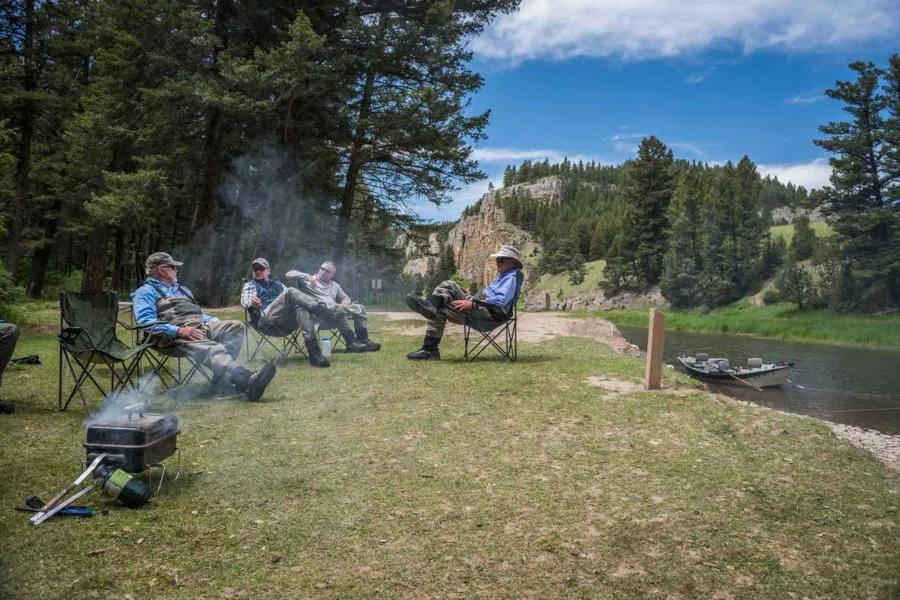
June
June Highlights:
Best Month for Matching the Hatches of PMDs, caddis, and stoneflies.
Best Month for Dry-Dropper Rigs.
Best Month for Hot Coffee in the Morning and Cold Cocktails in the Afternoon.
June is the month of the greatest variance of streamflows and fishing conditions and it is also the month of the most prolific hatches of caddis, stoneflies, PMDs, and early grasshoppers. Early in the month snowmelt runoff and rain events can still be common, but later in June streamflows can be so low that some floating anglers can be challenged to get down the river. By early June snowpack and streamflow data can paint a detailed picture to help forecast when the Smith River may crest and begin to drop—typically by June 5th. When it does begin to drop enough for the most favorable fishing and floating conditions—typically below 1,000 cubic feet per second (cfs) and with about 6 inches of visibility—the river is one of the best freestones in Montana for the remainder of the month of June. Like the streamflows, June weather changes as the month progresses. Early June sees average daily high air temperatures in the mid-60 degrees F while by month’s end the average daily high temperatures rise to almost 80 degrees F. Measurable precipitation is likely to fall on nine days throughout the month. Most of those days occur early in the month, which also coincides with the consistently dropping streamflows throughout June.
For planning a fly fishing trip on the Smith River in June, it is really best to break the month in two. The first half of June anglers on the Smith River typically experience a river that is still in snowmelt runoff or just coming out of snowmelt runoff. Peak flows on the Smith generally occur in late May or early June. While flows are high in early June, in most years the river begins to stabilize by June 10. During years of lower-than-average snowmelt runoff, streamflows may even be dropping by June 1. Higher streamflows in early June generally rule out dry-fly fishing opportunities. During these high flows, this is the time for big ugly patterns, and anglers have their best luck stripping streamers or fishing nymph rigs with large, weighted flies.
During the second half of June, the river is typically running low and clear and anglers get to experience some of the best dry fly fishing found anywhere in Montana. The later half of June is one the most variable times of the season, and fishing conditions can change from day to day and even hour to hour. On an average water year, this is typically one of the best dry-fly windows on the Smith. On low water years, warmer water temperatures can become an issue as early as the last week of June, causing the fishing window to be best early in the morning or late in the evening—which isn’t a problem because most campsites are a very short walk from the river.
The entire month of June is the most popular time for floating and fishing the Smith River. The main reason is the weather in June is more consistent for comfort and enjoyment than in April or May. The fishing in June can vary greatly but the weather is often pleasant for more than it isn't. That doesn't inclement weather doesn't happen in June--we've had snow fall on our full outfitted trips in June and weeks in May were even the night time lows stay above 60 degrees.
Visit our Smith River Fishing Page to learn more about April fly fishing on the Smith River.

July
July Highlights:
Best Month for Sunrises and Sunsets.
Best Month for the Prospect of Fishing Single Dry Flies.
Best Month for Sandal Tans.
Fishing in July on the Smith River is entirely dependent on streamflows. Similar to June, July is best partitioned into early July and the rest of July. The Smith River drainage is a small drainage compared to the larger catchment areas like the Yellowstone and Madison Rivers. Additionally, the Smith River flows through many large agricultural farms. As the rains of May and June cease and the heat of summer hits in July the demand for irrigation increases and streamflows plummet as irrigators pull water for crops. During years when snowpack is normal and May and June have average or above average precipitation, early July on the Smith River can be great fishing and good streamflows for floating. Even during good water years the second half of July can mean streamflows and water temps are in ranges that are less than ideal for a trip down the Smith River.
Even if the fishing action in early July can be a little less than consistent than May or June, the weather is not. Early July sees average daily high air temperatures in the high 70 degrees F while by month’s end the average daily high temperatures rise well above 80 degrees F. Measurable precipitation is only likely to fall on less than five days throughout the month. In most years, early July sees flows at a level conducive to floating and fishing, but as the days tick away the flows drop and water temps rise, creating less than ideal conditions. July fly fishing on the Smith River is very different from June. If June sees the Smith River come into shape and will stay that way for most of the month, July means the Smith River starts in prime shape and slowly changes to less than ideal by month’s end.
Even with the towering cliff walls of the Smith River canyon, the intense sunlight of summer can warm the cool waters of the Smith River. Water temps paired with streamflows are really the determining factor when fishing the Smith River in July. Despite the river’s healthy population of aquatic insects, water temperatures in late July often rise to undesirable levels for actively feeding trout. If water temperatures stay in the low 60 degrees F look for hatches of PMDs, caddis, spruce moths, and tricos. A few late hatching stoneflies may occur, but they will be seen early in the morning. Terrestrials may be abundant as well. Because water temps in the low 60 degrees F coupled with bright sunshine are the norm on the Smith River in July, a two-fly subsurface nymph rig is always a good choice.
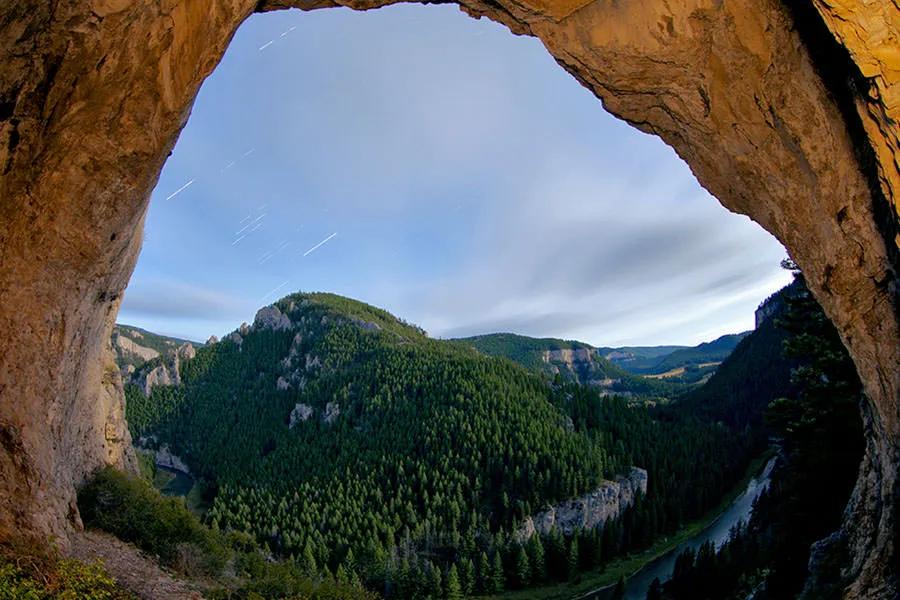
August
August Highlights:
Best Month to Canoe the Smith.
Best Month for Ice Cream Sandwiches at the Heaven on Earth Ranch.
A fly fishing trip during August on the Smith River is truly an adventure for the DIY angler. Streamflows are low meaning that only canoes, kayaks, or packrafts can make it down. But more important than getting down the river is the prevalence of warm water temperatures--in fact it is not uncommon for the Smith River in August to be under Hoot Owl Restrictions for the entire month. For a fly fishing trip on the Smith River in August, expect a river that is a shadow of its usually glamorous self. This isn’t because the fish leave or water quality is poor.
If an option does exist to fly fish the Smith River in August—if access is gained through private land-owner permission or possibly utilizing a shallow water canoe—fishing action will be focused early and late in the day. With low flows and bright sunshine that is common in August, trout on the Smith River may feed on the surface early in the morning and late in the evening. As the water temperature climbs above 68 degrees F, expect trout to retreat to cool, deep water and cease feeding until cooler water temperatures prevail. Because of these high water temperatures, anglers on the Smith River in August should focus entirely on the canyon section—below the Rock Creek confluence and above the Deer Creek confluence.
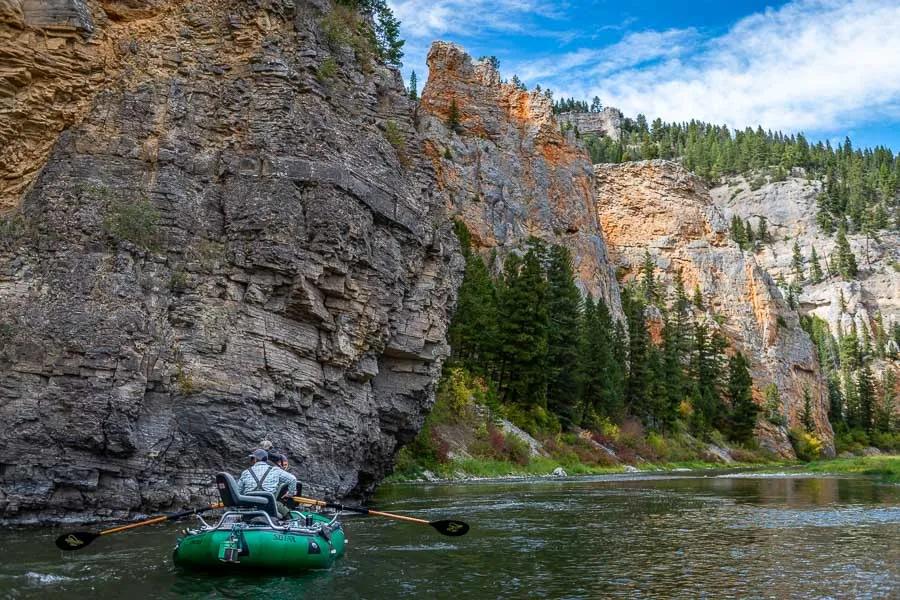
September
September Highlights:
Best Month for Solitude on the Smith--TIE with April.
Second Best Month for Dry-Dropper Fishing--second to June.
Best Month for Fall Scenery on the Smith.
Best Month to Go on Short Notice.
When September hits the calendar, Smith River loyalists begin to watch streamflows and localized weather patterns. The first half of September on the Smith River is akin to August--water temps stay high and streamflows are still too low to effectively fish the river. However, as the second half of September hits and local irrigators begin to take less water from the river for their crops, streamflows actually rise in late September. As days grow shorter, water temperatures drop to near ideal levels for trout. Around mid-September, irrigators turn off their head gates, which often results in a small but meaningful bump in streamflows. Fall trips are always a gamble on the Smith, and some years the river is still too low to effectively float. There is about a 50 percent chance that flows will be high enough to get down the river for experienced boaters for a late fall trip – it all depends on streamflows.
If the stars align and a September trip on the Smith River is a possibility, the fishing is often consistent. Hatches aren't as strong as during May and June but water temps are often in the ideal range for trout to feed. September weather on the Smith River can dish out heat, cold, rain, and snow. Daily high temperatures have a broad range—from 80 degrees F in early September to around 60 degrees F by month’s end. Precipitation is a little higher than August, piling up to about 1.5” and the potential for the season’s first snowfall exists towards the end of the month.
If it is even possible, fly fishing the Smith River in early September can feel like a summer day. Fish will be active before the sun is high overhead. A few fish may rise to a well-presented caddis or grasshopper. Once the sun gets high overhead a tandem nymph rig or slowly dragged or swung streamer may entice more fish to strike than might be willing to rise to a dry fly. As the first cold front passes through—which often does occur in late September—this brings on the start of fall and brown trout begin to prepare for their spawn and become more aggressive. These larger trout actively seek out prey while also protecting their territory.
Even with a 50-50 chance of a September trip on the Smith River happening, each year anglers who know the Smith River and the great fishing it can serve up pay attention to streamflows religiously in mid-September and beyond. As the middle of the month comes and streamflows increase and water temperatures lower, hatches of Blue Winged Olive mayflies commence. When a strong hatch occurs, look for trout in slower currents and “softer water” such as the inside of river bends, seams behind rocks, and slower runs below riffles.
After the season’s first cold front passes, look for brown trout in the usual predator hangouts—deeper water near shallow water, hiding near structure, or along a cut bank. Although most brown trout will spawn in October or November, a few browns may begin spawning in late September. They may be found on their redds on shallow gravel bars. Please avoid targeting spawning trout when they are encountered.
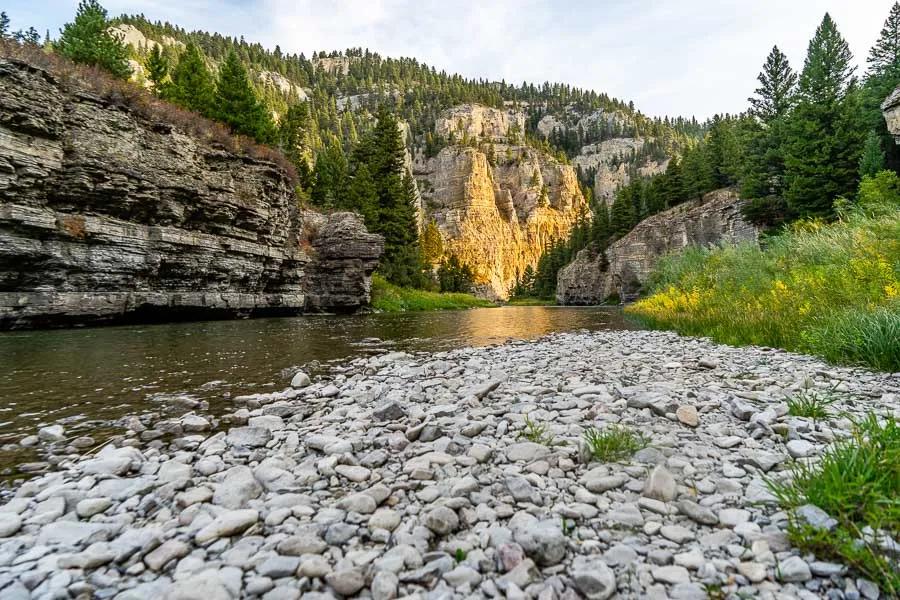
October
October Highlights:
Best Month for Fall Blue Winged Olives and October Caddis Hatches.
Best Month to Hear Bugling Elk.
Second Best Month to Wake up to 24 Inches of Snow--second to April.
A fly fishing trip on the Smith River in October doesn't happen very often, but if it does it is likely to happen earlier in month compared to later in the month. This is mostly due to the increased potential of harsh winter weather in the Smith River canyon in October. Early October can be a great time to enjoy some high-quality dry-fly fishing if you are lucky enough to catch the river at the right fall flows—anything above 150 cubic feet per second (cfs). If flows drop below 150 cfs, floating becomes difficult because as much time is spent dragging boats across shallow flats or boulders as it is spent fishing.
Unlike the long and sunny days of June, October’s days are short and nights are long and cold. If planning a float fishing trip on the Smith River in October, anglers should plan for no less than four nights on the river—covering the near-60 mile floating and camping trip in less than four nights at low streamflows makes for an impatient trip. In October there’s limited hours of daylight so proper planning is crucial to ensure camp is set-up and struck at appropriate times. Despite streamflows being low, they are usually consistent and clear. Anglers on the Smith River can expect a river devoid of many other anglers or river users. Gone are the warm and sunny days of June but also gone are other anglers and river-users. For anyone committing to the adventure of a Smith River trip in October, the reward for camping in the cold weather is a river and a beautiful canyon mostly devoid of other people.
For many anglers October and the regular occurrence of fall-like weather means a commitment to fishing streamers for aggressive brown trout. The Smith River is prime for targeting large trout with large flies. Choose large streamers as the adage of “big-fly means big-trout” is very true on the Smith River in fall.
Planning for a Smith River trip is a good bit of the fun for this unique Montana fly fishing adventure. Be sure to also touch up on some of these Top Tips for Fishing the Smith River. When packing for a Smith River fly fishing trip, be sure you have the proper equipment–including flies–because once you launch at Camp Baker and start your expedition, there are no fly shops or gear shops to make up for items you forgot on your Smith River packing list.
